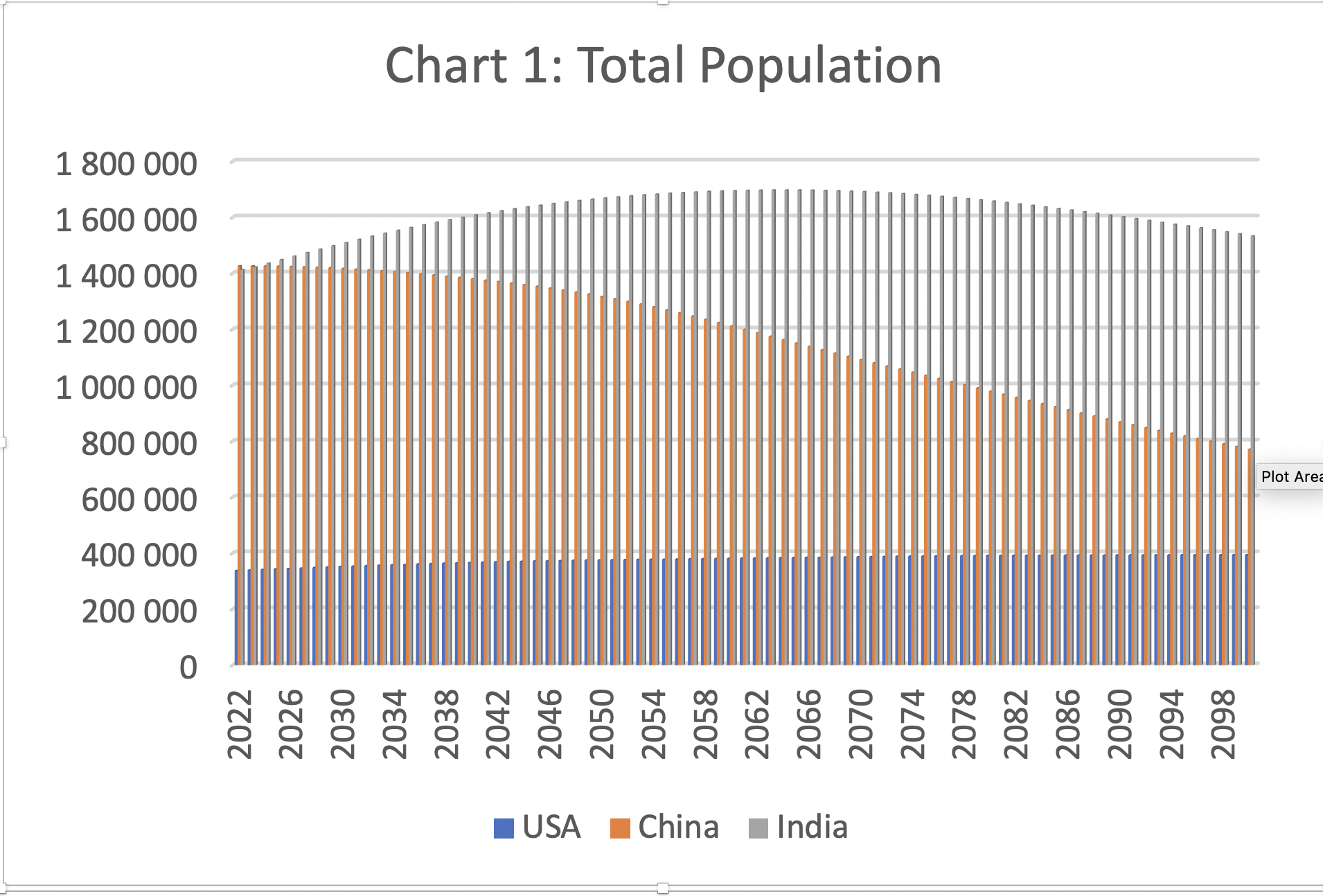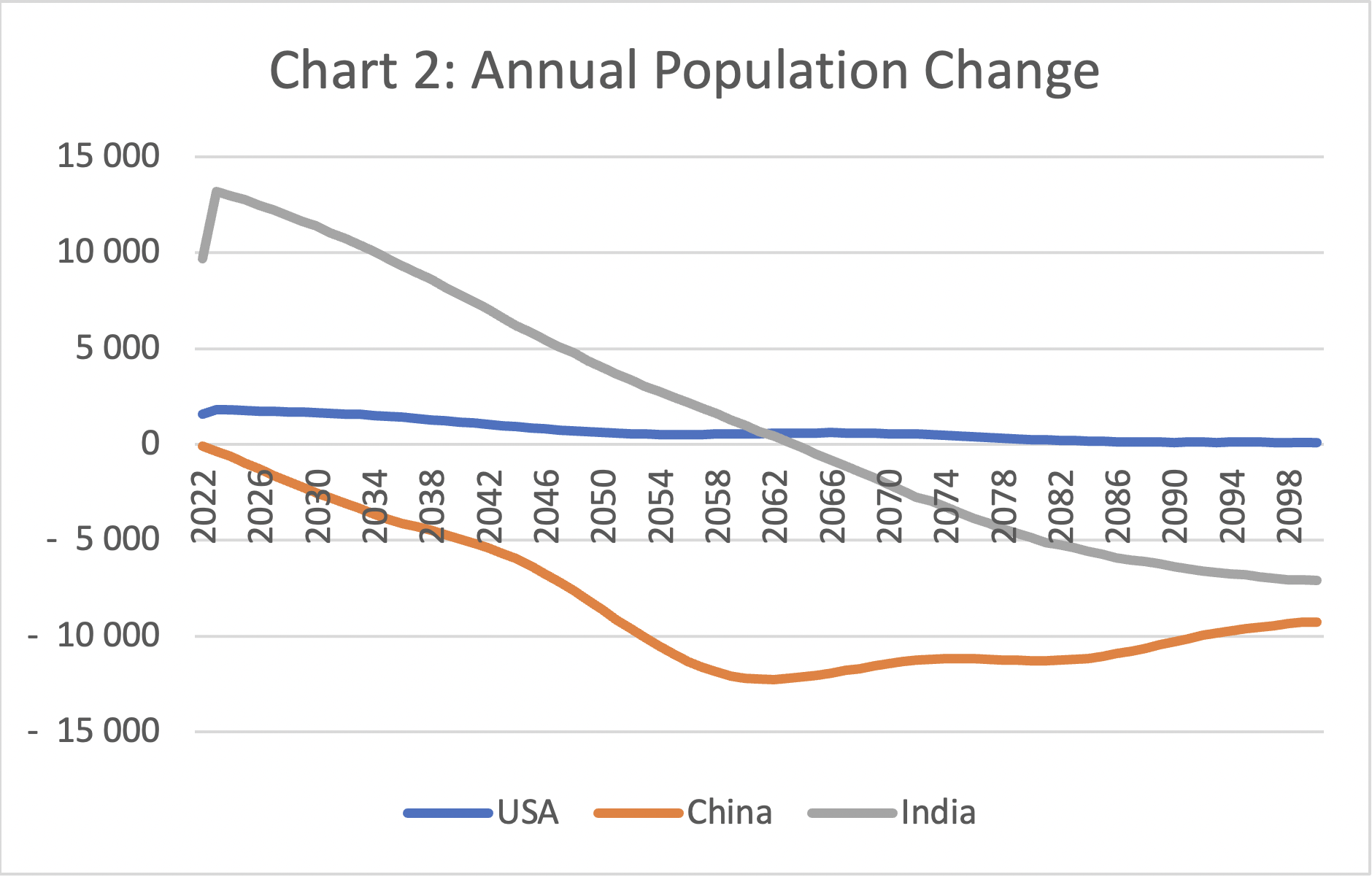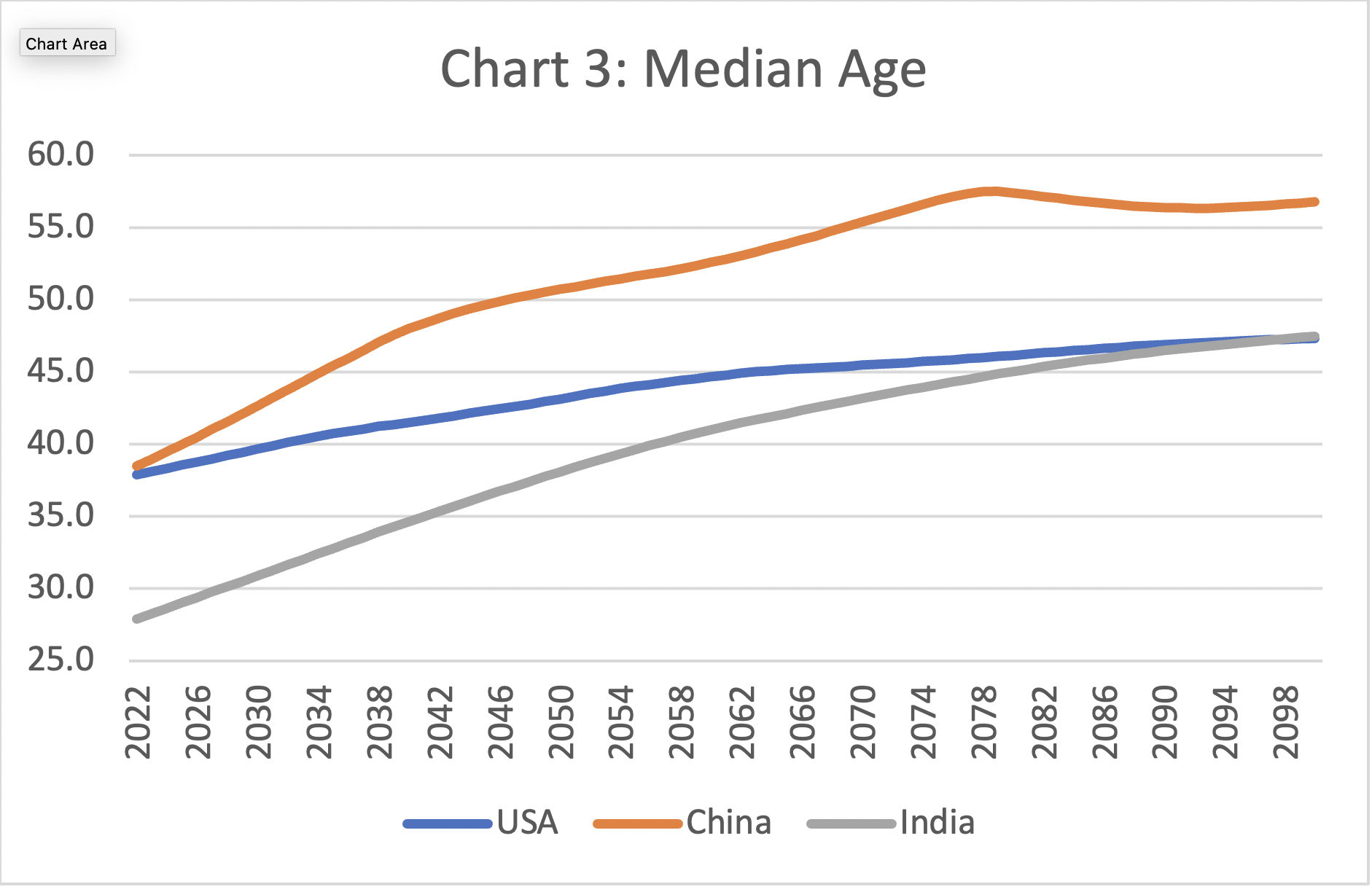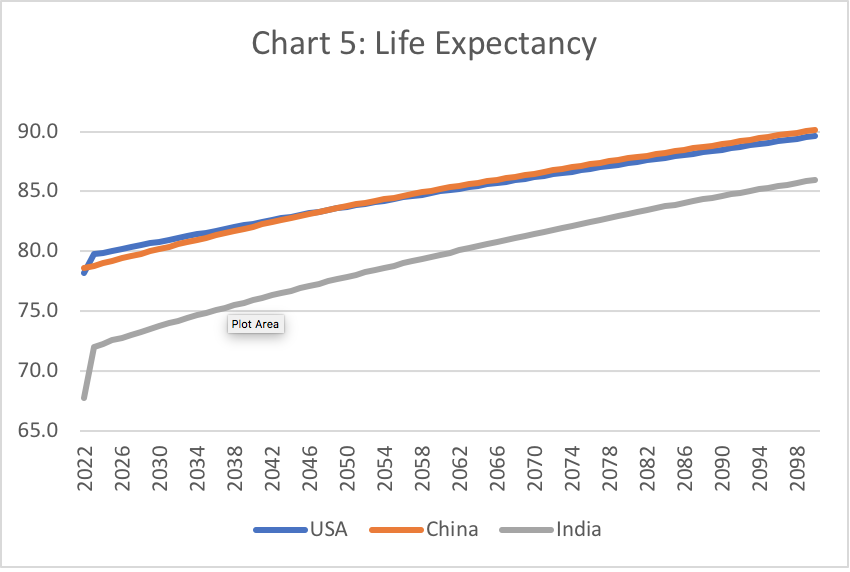Demographic future of China, the USA and India
July 29, 2022
_Much has been written of the 21st century being the Chinese century in contrast to the 20th century being the American century.
_
The incredible rise of China as an economic and military force has been remarkable, with much speculation that the size of the Chinese economy will in future overtake the size of the US economy.
While China’s initial growth was export-led, its growth over the last decade has been linked to extraordinary infrastructure investment, including housing, as well as strong private consumption and business investment growth more akin to that of a developed economy.
This growth coincided with China’s population being at the high point of its demographic dividend phase when a very large portion of its population was in the most productive stage of life (between 30 and 55 years of age).
But the recent UN World Population Report Report confirms China’s demography for the rest of this century will be very different to that of the previous 20-30 years and very different to that of the USA and India.

Source: UN World Population Prospects 2022
Chart 1 shows China’s total population declining from well over 1.4 billion in 2022 to 0.77 billion in 2100 – almost halving. By contrast the population of the USA is projected to rise from 0.34 billion in 2022 to 0.39 billion by 2100 while that of India is projected to rise from 1.4 billion to 1.7 billion by 2064 and before declining to 1.5 billion by 2100.
Chart 2 shows the annual quantum of population change for these three nations.
China’s annual population is projected to start declining from 2022 with the rate of decline rising to 12.3 million per annum by 2064 and then slowing to an annual decline of 9.3 million per annum by 2100. US population growth is projected to pick up from 1.58 million in 2022 to 1.83 million in 2023 as the US recovers from the impact of Covid. The rate of US population growth is then projected to gradually slow to 0.096 million per annum by 2100.

India’s population growth is also projected to sharply rebound from 9.7 million in 2022 (due to covid) to 13.2 million in 2023. Its growth rate is then projected to steadily decline before turning negative from 2064. The rate of population decline is then projected to steadily increase to 7.1 million per annum by 2100.

All three nations will age significantly through the 21st century. Chart 3 highlights the extraordinary rate of ageing in China from a current median age of 38.5 to 56.8 by 2100. By contrast the US is projected to age more gradually from a current median age of 37.9 to 47.3 by 2100. The slower rate of ageing in the US is primarily a function of immigration.
India’s population will also age significantly but will first go through the peak of its demographic dividend phase over the next 20-30 years giving it a significant opportunity to increase productivity and economic growth. Its median age is currently a very youthful 27.9 but is projected to rise to 47.9 by 2100.
Drivers of Population Change There are three key drivers of population change – fertility (Chart 4); life expectancy (Chart 5) and net migration.

The UN assumes China’s fertility rate will rise from 1.18 births per woman in 2022 to 1.48 in 2100. This is part of the UN’s broader assumption that nations with very low fertility will see this steadily rise for the rest of this century.
Similarly, the UN assumes the US fertility rate will rise from 1.66 births per woman in 2022 to 1.71.
Both assumptions are contrary to the so-called ‘low fertility trap’ that posits nations with a very low fertility rate will be unable to escape the trap due to three self-reinforcing mechanisms linked to: • Demography – fewer potential mothers resulting in fewer births; • Sociological - general decline in the ideal family size; and • Economic – rising financial aspirations of young adults offsets by lower relative incomes.
If China’s fertility rate does not recover as assumed by the UN, its rate of population ageing and decline would be even more rapid.
By contrast, India’s fertility rate is assumed to continue to decline from its current 2.01 births per woman to 1.69 by 2100. It is that assumption that drives the rapid projected decline in India’s population from the 2060s and its increase in ageing. The UN assumes life expectancy for all three nations will rise steadily.

For China, the UN assumes life expectancy will rise from 78.6 in 2022 to 90.2 by 2100.
For India, the UN assumes life expectancy will rise rapidly from 67.7 in 2022 to 72.0 in 2023 (due to assumed expiry of the impact of covid) and then continue rising to 86.0 by 2100.
Similar to India, the UN assumes US life expectancy will rise steeply from 78.2 in 2022 to 79.7 in 2023 and then increase more gradually to 89.6 in 2100.
It should be noted life expectancy in the US was declining for three years before covid due to factors such as limited access health services by poorer Americans, rising obesity, , the opioid epidemic and high levels of gun deaths. The decline in US life expectancy accelerated in 2020 and 2021 due to Covid.
The final key assumption underlying population projections is net migration.
The UN has assumed long-term net migration for China of negative 0.31 million per annum. This is broadly in line with total negative net migration out of China for the period 2013-17 which was negative 1.74 million.
The UN assumption of net migration for India is negative 0.496 per annum. This also reflects total net migration for India for the period 2013-17 which was negative 2.66 million. For the US, the UN assume net migration of 1.029 million per annum. This is marginally higher than total net migration for the US for the period 2013-17 of 4.77 million.
Conclusion While all three nations will age significantly, the demography of China will be remarkably different to the other two. China will undergo a rate of ageing and quantum of population decline that no nation has ever experienced in human history even if its fertility rate recovers significantly as assumed by the UN.
All things equal, China’s demography will lead to weakening of both its participation rate and productivity growth. Per capita private consumption growth will slow and consequently business investment will decline. Pressure on China’s government budgets will intensify.
China’s demographic directions must bring into question forecasts of the 21st century being the Chinese century.

